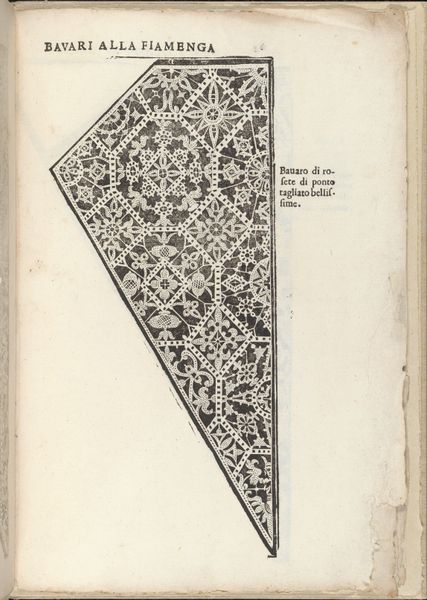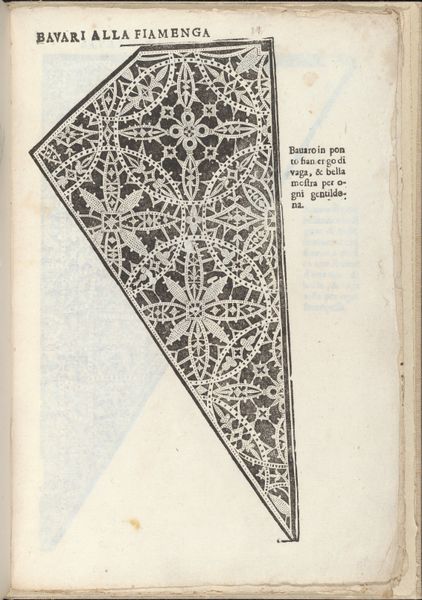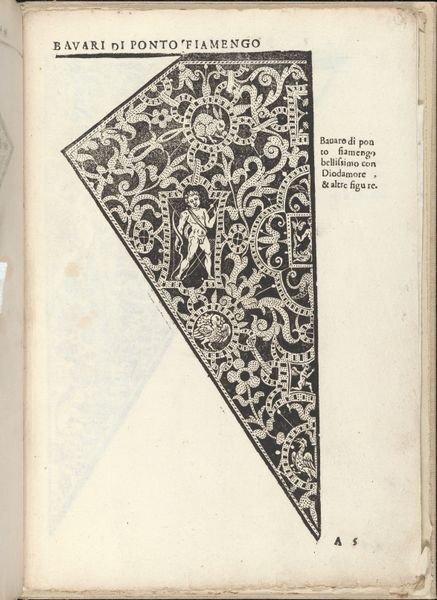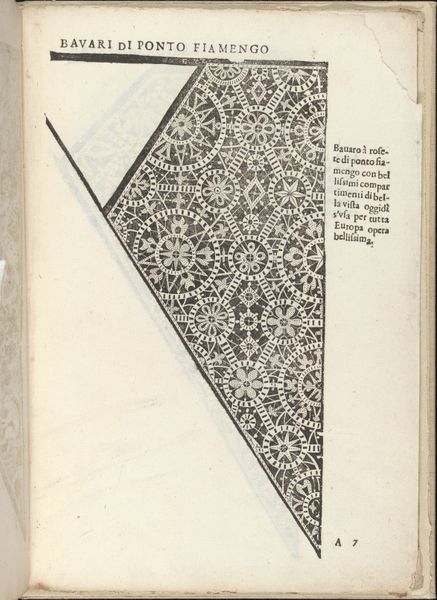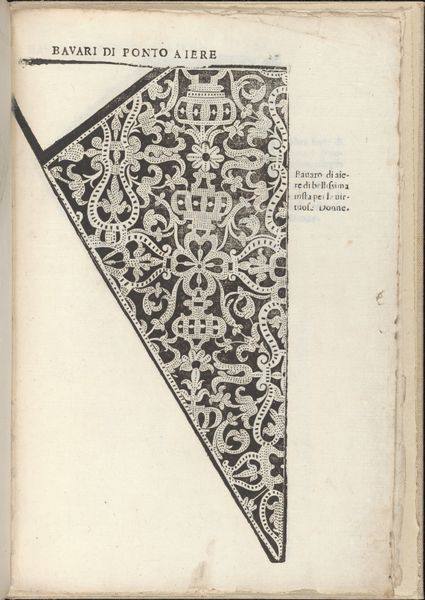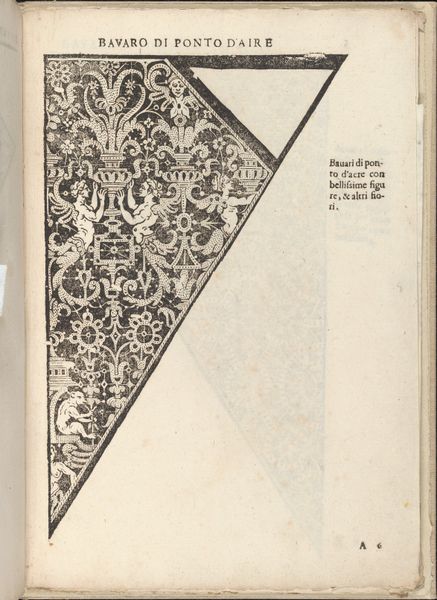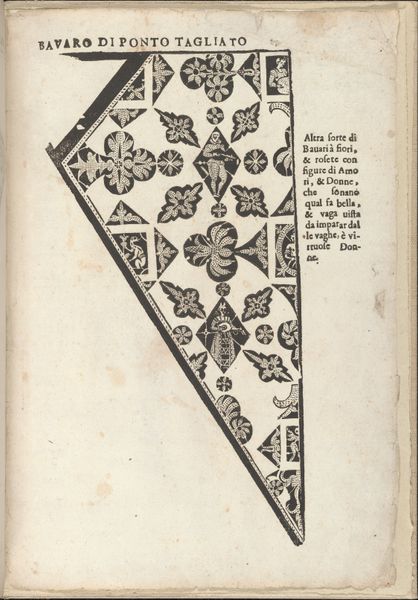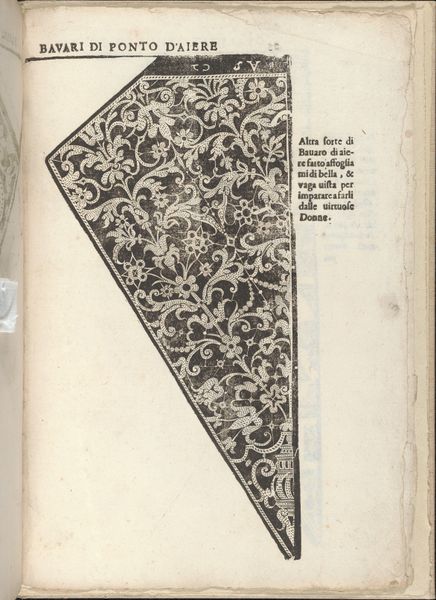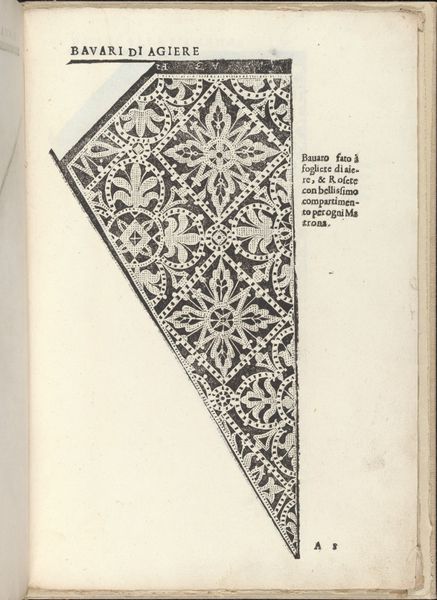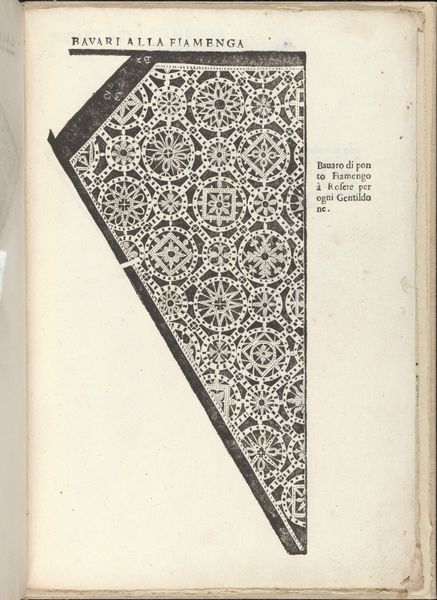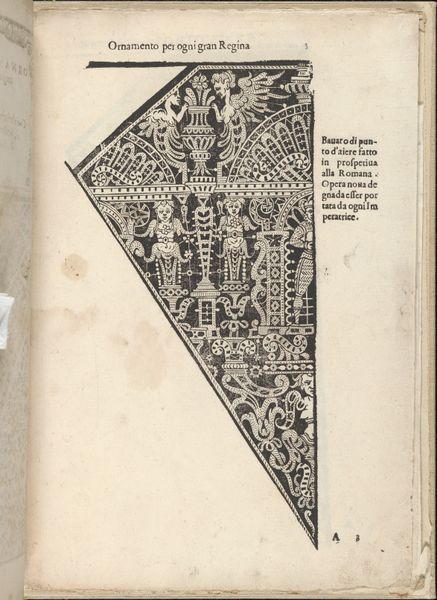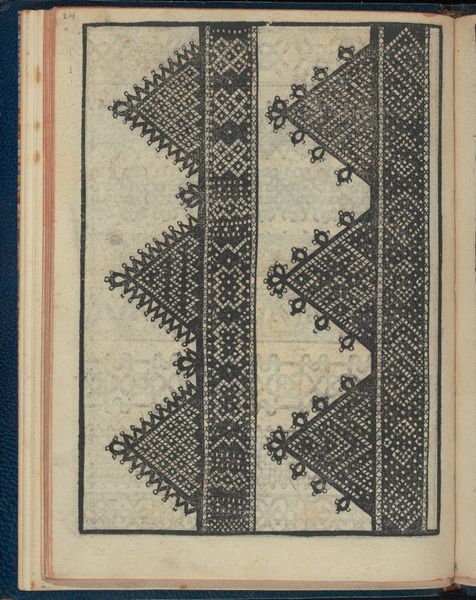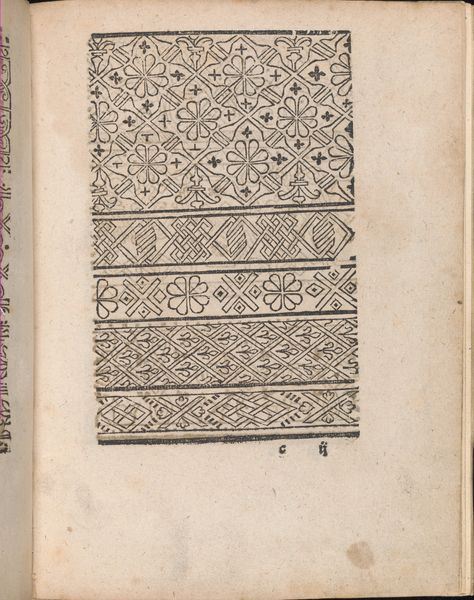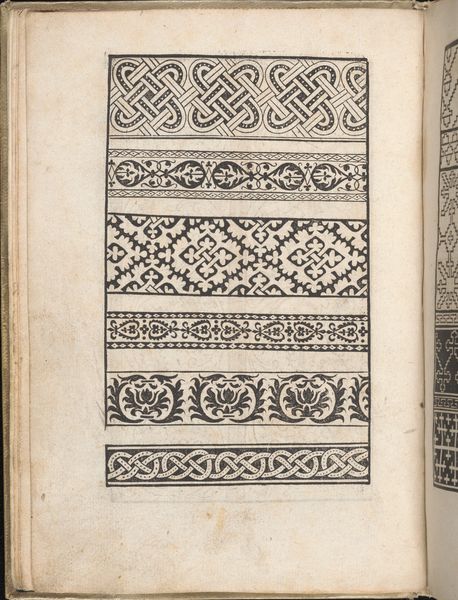
Ornamento nobile...Fatta da Lucretia Romana (Libro V of the Corona), page 11 (recto) 1620
0:00
0:00
drawing, graphic-art, print, intaglio, paper, engraving
#
drawing
#
graphic-art
# print
#
intaglio
#
figuration
#
paper
#
geometric
#
history-painting
#
italian-renaissance
#
engraving
Dimensions: Overall: 12 3/16 x 8 1/4 in. (31 x 21 cm)
Copyright: Public Domain
Editor: Here we have Cesare Vecellio's "Ornamento nobile...Fatta da Lucretia Romana," from 1620, a print on paper. The intricacy of the geometric and floral designs really grabs my attention. What is your take on this ornamental page? Curator: As a materialist, what strikes me is not just the design but its means of production. This wasn't simply drawn; it was engraved, a labor-intensive process involving skilled artisans and specialized tools. Consider the social context: who was producing these designs, and for what purpose? Editor: It's fascinating to think about the engraver's role! The title references Lucretia Romana... How much agency might she have had in the actual making? Curator: Exactly! The title points to an authorship which, under closer examination, might reveal complex layers of collaboration and appropriation. We need to ask: who benefits from this attribution? The noblewoman, the printer, or both? Moreover, the paper itself signifies a certain level of wealth and access to resources. This wasn't a cheap form of dissemination. Editor: So it's not just about the image but also about the system that allowed it to be created and circulated? Curator: Precisely. And think about its use! This was a pattern book. Craft itself would’ve been work and an exercise of skill within a class structure. How would class and social hierarchy play into producing and interpreting patterns, and eventually objects made? It forces us to consider the blurring lines between art and craft. Editor: That makes me look at it in a whole new light. It's more than just pretty designs; it's a window into labor, class, and the very definition of art. Curator: Indeed. Examining the materials and the social conditions of its production reveals much about the cultural values of the time. Hopefully, this encourages you to critically assess similar objects from a fresh, and perhaps challenging, perspective.
Comments
No comments
Be the first to comment and join the conversation on the ultimate creative platform.
